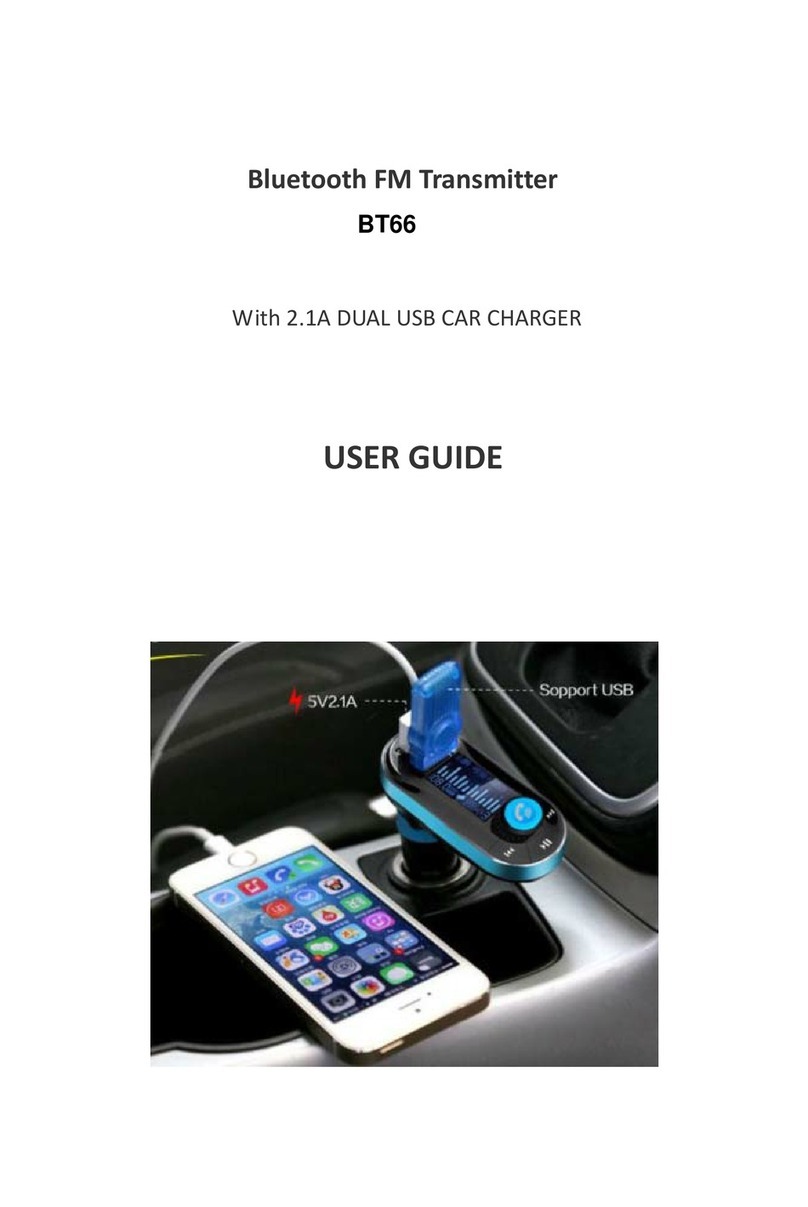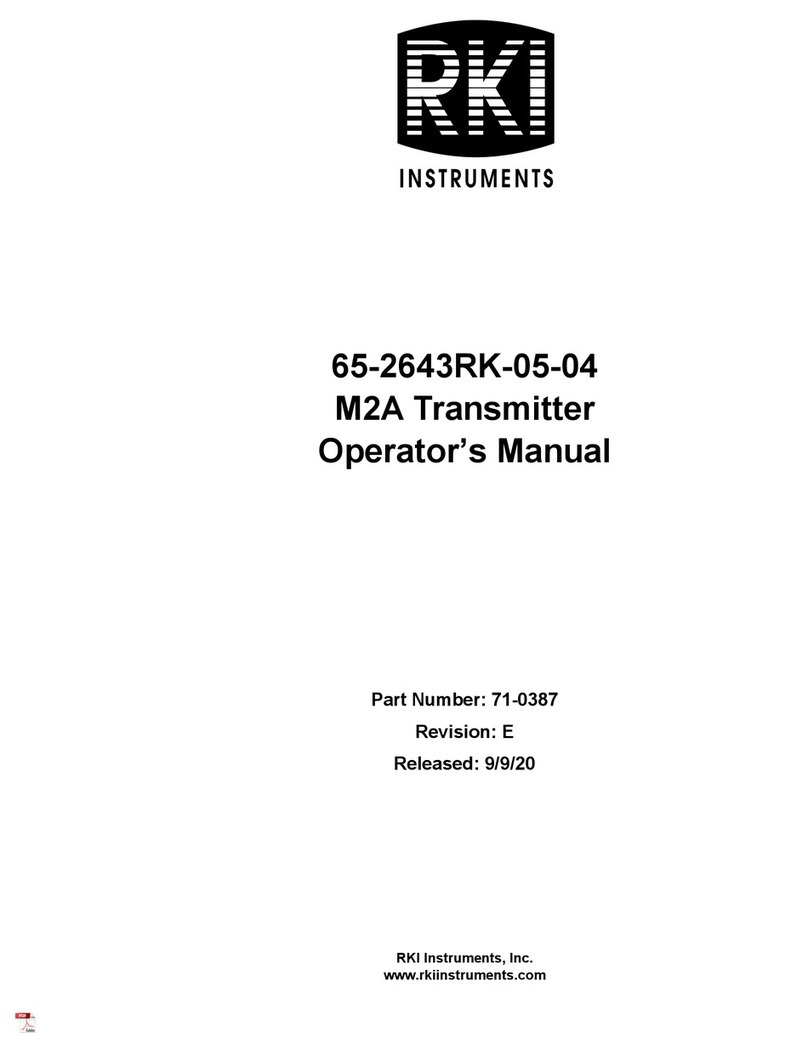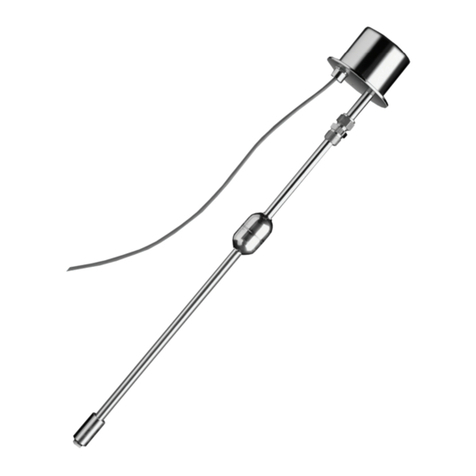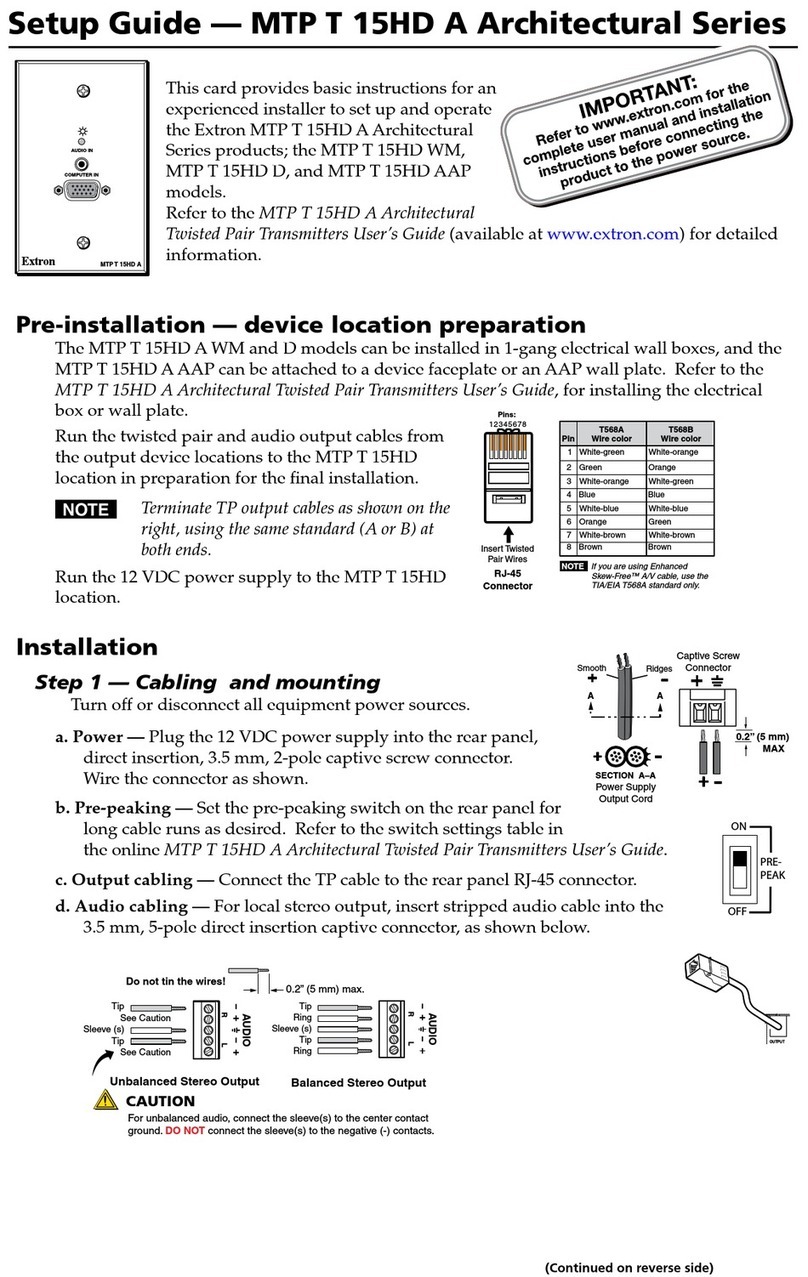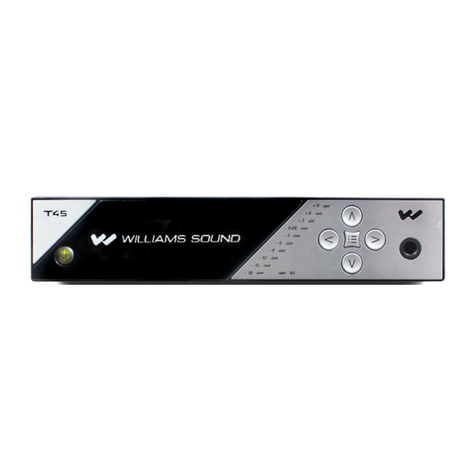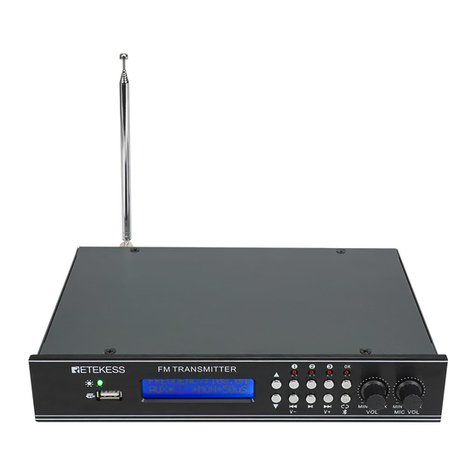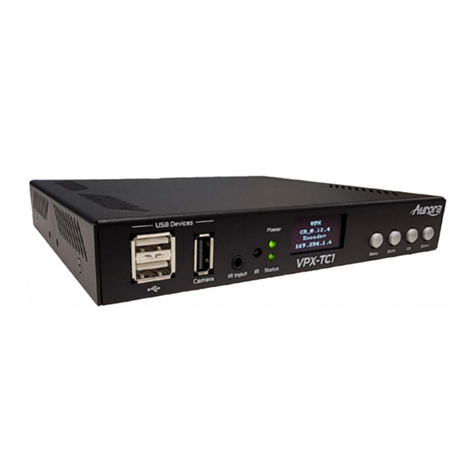SpreadNet SN935-DT User manual

TheSN935-DT motionsensorcombinesdualtechnologymotiondetection
with wireless Spread Spectrum RF in one small, attractive package.
Within the protected area, the passive infrared (PIR) detector senses
changesin infraredenergy (suchas bodyheat emittedby anintruder), and
turnsonthe microwavedetectorwhich sensesthemotion. Both technolo-
gies must verify intrusion within a preset time interval,
virtually eliminating
false alarms
.
To reduce current drain and prolong battery life, the microwave circuitry
is dormant until the PIR detects a change in the infrared energy level.
Inaddition,theSN935-DTsensorfeaturesasupervisioncircuitthatmonitors
themicrowavetechnology. Ifa problem is detected,thesensorwill go into
alarm.
TheSN935-DT sensorisalso equippedwith bothaFresnel lensand multi-
segmented PIR mirror. This unique optical system provides dense PIR
coverage from directly beneath the unit to maximum range.
InstallationInstructions
Select the best location in the room for both technologies. Aim the sensor
towardtheinterioroftheroom,awayfromwindows,movingmachinery,and
heating/cooling sources. Do NOT mount the detector near wire screens
or large metal objects. We recommend that you verify the RF reception
prior to permanently mounting the sensor.
Maximum range is obtained at a
mounting height of 7'6" (2.3 m).
Makesurethesensorhasaclearline
of sight to all areas you wish to
protect. Infrared energy cannot
penetrate solid objects. If the PIR is
blocked, the unit will not alarm.
PCB
Mounting
Hole
Knockouts
Rear
Housing
Front Housing
Tamper Switch
Activator
Figure 1
SN935-DT Assembly
MountingProcedure
Features
Use the sensor's rear cover to mark
the mounting holes. To remove the
sensor'srearcover,useasmall-blade
screwdriver to push up on the latch
through the slot in the bottom of the
front housing. Gently pull the hous-
ings apart at the base first.
The printed circuit board (PCB) is
mounted in the front housing. Do
NOT remove the PCB.
Securely mount the rear housing at the desired location. When mounting
the sensor on a wall, use the two knockout holes in the back of the rear
housing. When mounting the sensor in a corner, use the knockout holes
on the beveled corners of the unit. Remove the knock-outs, mark and drill
themountingholes,andmountthetransmitteratthedesiredlocation. Install
the batteries and replace the cover.
®
SpreadNet
Model SN935-DT
RF DUAL TEC®
Microwave/Passive Infra-Red
Transmitter
• Microwave/PIRtechnology
• Dual element PIR
• Microwave supervision
• Two-minute holdout circuit
• Cover tamper switch
• Automatic walk-test mode
• 100mWtransmitterpower(max)
• Simpleinstallation
• Spread Spectrum technology
• Unique PIR optics
• Single edge PIR triggering
• Lithium batteries included
• Optional barrier and pet-alley
lenses available
• Programmablesupervisoryrate
• EEPROM memory
MountingLocation
Pull apart the
front and rear
housings at the
base first
InstallingtheBatteries
The SN935-DT can operate on 2 AA lithium batteries. For increased life,
however,theunit can accommodate4batteries. The batteries mustalways
beinstalledand replacedinpairs.
Fourbatteries,shippedwiththeunit,mustbeinstalledpriortotesting. Proper
orientation is shown in Figure 2.
NOTE: To prevent excessive battery drain during setup and installation,
you should remove the batteries whenever the cover is open and
the unit is not being tested.
Programming the Transmitter
Toprogramthetransmitter,refertotheSN900-PROGProgrammingManual
(P/N5-051-136-00).
SystemTesting
Opening the front cover of the SN935-DT signals a tamper condition and
automatically places the unit in the walk-test mode. This also disables the
two-minute hold out circuit. The unit remains in this mode for a period of
8minutesafterthecoverhasbeenreplaced. Therearetwowalk-testLEDs
located at the bottom of the unit behind the lens, one on each side. These
LEDs are only active while the unit is in the walk-test mode.
Walk-Test
Programmer
Range
Adjust
Spread
Spectrum
Antenna
Test/Alarm
Jumper
ALARM PIR
Test/Alarm
Jumper
Tamper
Switch (S1)
Figure 2
PCB Layout and
Connections
A jumper at the bottom of the PCB, next to the Tamper Switch (S1), allows
you to test the PIR section separately. Placing the jumper in the "PIR"
position, as shown in Figure 2, allows you to walk-test the PIR without
activating the microwave circuits. The range of the PIR detector is not
adjustable. The PIR's field of view (range) is determined by the mounting
height and the type of lens installed.
Microwave Supervision
Walk-testingtheSN935-DTmotionsensorisatwo-stageprocess.Thefirst
step is to walk-test the PIR. Walk across the protected area at the ranges
tobecovered.TwotofournormalstepsshouldmaketheLEDslight.Since
the LEDs are connected in parallel, both LEDs will light at the same time.
Whenthereisnomotionintheprotectedarea,theLEDs shouldbeoff.The
secondstageistoadjusttherangeofmicrowavetransmitter.Forcontinued
reliability, the sensor should be walk-tested at least once per year.
Returning the jumper to the ALARM position will reactivate the microwave
circuits. Remember that as long as the cover is open, the holdout circuit
remains disabled. In order to adjust the microwave, the PIR must first see
motion which will activate the microwave circuitry.
There is a microwave range potentiometer located near the center of
the printed circuit board below the battery holder (refer to Figure 2).
With the PCB oriented in its correct mounting position and facing you,
turning the potentiometer clockwise will INCREASE the range of
the microwave.
After determining the field of view for the PIR, set the microwave range
potentiometeratMINIMUM byturningit counterclockwiseasfar asitwill go.
(Use a small screwdriver to turn the range potentiometer.) Then, with the
testjumperintheALARMposition,walk-testthesensor,graduallyincreasing
the sensitivity of the microwave until the desired range is obtained.
Range Adjustment
If the microwave technology stops sending or receiving signals, the sensor
will lock into an alarm. The LEDs at the sensor, however, will not light.
If the microwave regains its signal, the sensor will return to normal
operation.
Microwave Antenna
Walk-Test LEDs

ProtectionPatterns
Printed in Hong Kong
Copyright 1995 C&K Systems, Inc.
5-051-316-00 Rev B
C&K is a registered trademark of C&K
Components, Inc. SpreadNet and DUAL TEC
are registered trademarks of C&K Systems, Inc.
All Rights Reserved
TOP VIEW
Wide Angle Lens
30'
SIDE VIEW
Wide Angle Lens
7'6"
35'
Down Long Range
Intermediate
Lower
Zones
floor
PROTECTION PATTERNS FOR OPTIONAL LENSES
35'
TOP VIEW
Barrier Lens SIDE VIEW
Barrier Lens
floor
7'6"
35'
4'
SIDE VIEW
Pet-Alley Lens
TOP VIEW
Pet-Alley Lens
The Top View Pet-Alley Lens is the
same as the Top View Wide Angle
Lens.
35'
Retainer
Latch
LENS
Figure3
SN935-DT
LensChange
Assembly
Look-Down
Window
Lens
Pins
Retainer
Feet
To change the Fresnel lens:
1. Open the cover and remove the
printed circuit board (PCB). To
removethePCB,useasmall-blade
screwdriverandpushdownonthe
latchatthetopofthefronthousing.
Gently pull the PCB forward hold-
ingtheboardbythebatteryholder
(see Figure 1).
2. Depresstheretainerlatch,andpull
the lens retainer forward. (If nec-
essary,usea smallscrewdriverto
carefully depress the latch. Avoid
excessive force, or the latch will
break.)
3. Remove the existing lens.
4. Insertthepins of thenewlens into
the holes on the lens retainer as
shown.
5. Replace the lens and retainer together (the feet of the retainer fit
into the look-down window groove).
6. Snap the retainer latch back in place.
7. Reassemble the housing.
Changing the Fresnel Lens
NOTE: Two additional lenses are available for these sensors. The pet-alley lens
blocks lower PIR zones to exclude pets from the field of view; the barrier lens blocks
outer zones for narrow applications.
When the pet-alley lens is used, install a look-down mask (provided) over the inside
of the look-down window, and make sure to mount the sensor at a height of 4'.
The optional lenses are available at no charge from your local distributor, or call C&K
Systems, Inc. at (800) 227-8065. Order Part Number 0-000-025-01.
FCC NOTICE
The Model SN935-DT DUAL TEC®PIR Transmitter generates and uses radio frequency energy. If
not installed and used in accordance with the manufacturer's instructions, it may cause interference
to radio and television reception. The Passive Infrared (PIR) Transmitter has been tested and found
to comply with the specifications in Part 15 of FCC Rules for Class B Computing Devices and FCC
Part 15 Subpart C, Specifications for Intentional Spread Spectrum Radiators.
If this equipment causes interference to radio or television reception - which can be determined by
turningtheequipmentonandoff-theinstallerisencouragedtocorrecttheinterferencebyoneormore
of the following measures: 1) Reorient the antenna of the radio/television. 2) Connect the AC
transformer to a different outlet so the control panel and radio/television are on different branch
circuits. 3) Relocate the control panel with respect to the radio/television.
If necessary, the installer should consult an experienced radio/television technician for additional
suggestions, or sent for the "Interference Handbook" prepared by the Federal Communications
Commission. This booklet is available from the U.S. Government Printing Office, Washington D.C.,
20402, stock number 004-000-00450-7.
CAUTION: C&K does not support field changes or modifications to any of the SpreadNet RF
equipment unless they are specifically covered in this manual. All adjustments must be made at the
factory under the specific guidelines set forth in our manufacturing processes. Any modification to
the equipment could void the user's authority to operate the equipment and render the equipment in
violation of FCC Part 15, Subpart C, 15.247.
This device complies with Part 15 of the FCC Rules. Operation is subject to the following two
conditions: (1) this device may not cause harmful interference, and (2) this device must accept any
interference received, including interference that may cause undesired operation.
UL Compliance
For Grade A household burglar alarm and household fire warning system
applications using the C&K System 2316 Control Panel:
All transmitters must be programmed as supervised devices.
Only one transmitting device per zone.
Transmitter Device ID
After the SN935-DT Transmitter has been programmed (as outlined in the
SN900-PROGRFProgrammingManual)andtested,fillouttheTransmitter
Device I.D. Label (included in the installation package) prior to mounting
the label inside the transmitter.
The following procedure is recommended for mounting the label:
1. Remove the front cover/PCB assembly of the transmitter.
2. Remove the adhesive backing from the label and place
the label at the bottom of the rear housing.
3. Replace the cover.
LENS
RETAINER
Specifications
Range:
35' x 30' (11 m x 9 m)
PIR fields of view:
standard lens
11 long range
7 intermediate
4 lower
2 look-down
Power requirements:
2 or 4 - 3.6 VDC AA Lithium Batteries
(included)
PIR white light immunity:
4,000 Lux
Frequencies:
center band 2.45 GHz (microwave)
902 - 928 MHz Spread Spectrum
Sensitivity:
2 - 4 steps within field of view
Dimensions:
5" H x 2-7/8" W x 2-5/16" D
(13 cm x 7 cm x 6 cm)
Weight:
10 oz (283.5 g), without batteries
Operatingtemperature:
32o to 140oF (0o to 60o C)
RF immunity:
30 V/m, all mobile bands 10MHz - 1000MHz
RF Emission Standards:
USA: FCC Part 15
CANADA: Industry Canada (IC)
Replace Batteries only with
C&K Model # SN33L-BAT
SAFT Model # LS14500, LS6
Tadiran Model # TL-2100 /S
NOTE: Batteries should be replaced
following a low battery indication or every
4 years, whichever occurs first.
LIMITEDWARRANTY
Seller warrants its products to be in conformance with its own plans and specifications and to be free from
defectsinmaterialsandworkmanshipunder normal useand servicefor 18months fromthe datestampcontrol
on the product or for products not having a C&K Systems date stamp, for 12 months from the date of original
purchase,unless theinstallation instructions or catalogue setsforth ashorter period,in which casethe shorter
period shall apply. Seller's obligation shall be limited to repairing or replacing, at its option, free of charge for
materials or labor, any part which is proved not in compliance with Seller's specifications or proves defective
in materials or workmanship under normal use and service. This warranty is void if the product is altered or
improperly repaired or serviced by anyone other than C&K Systems factory service. For warranty service,
return the product transportation prepaid to C&K Factory Service, 107 Woodmere Road, Folsom, CA, 95630.
THERE ARE NO WARRANTIES, EXPRESS OR IMPLIED, OF MERCHANTABILITY OR FITNESS FOR A
PARTICULARPURPOSEOROTHERWISE,WHICHEXTENDBEYONDTHEDESCRIPTIONONTHEFACE
HEREOF. In no case shall Seller be liable to anyone for any consequential or incidental damages for breach
ofthis or anyother warranty,express or implied,or upon anyother basisofliability whatsoever,even if theloss
or damage is caused by Seller's own negligence or fault.
Seller does not represent that its product may not be compromised or circumvented; that the product will
prevent any personal injury or property loss by burglary, robbery, fire or otherwise; or that the product will in
all cases provide adequate warning or protection. Buyer understands that a properly installed and maintained
alarmmayonlyreducetheriskofburglary,robbery,orfirewithout warning,butitisnotinsuranceoraguarantee
that such will not occur or that there will be no personal injury or property loss as a result. CONSEQUENTLY,
SELLER SHALL HAVE NO LIABILITY FOR ANY PERSONAL INJURY, PROPERTY DAMAGE, OR OTHER
LOSS BASED ON A CLAIM THAT THE PRODUCT FAILED TO GIVE WARNING. However, if Seller be held
liable, whether directly or indirectly, for any loss or damage arising under this Limited Warranty or otherwise,
regardless of cause or origin, Seller's maximum liability shall not in any case exceed the purchase price of the
product, which shall be fixed as liquidated damages and not as a penalty, and shall be the complete and
exclusive remedy against Seller.
Thiswarranty replacesall previouswarranties and is the onlywarranty madeby C&KSystems onthis product.
No increase or alteration, written or verbal, of the obligation of this warranty is authorized.
Table of contents
Other SpreadNet Transmitter manuals
Popular Transmitter manuals by other brands
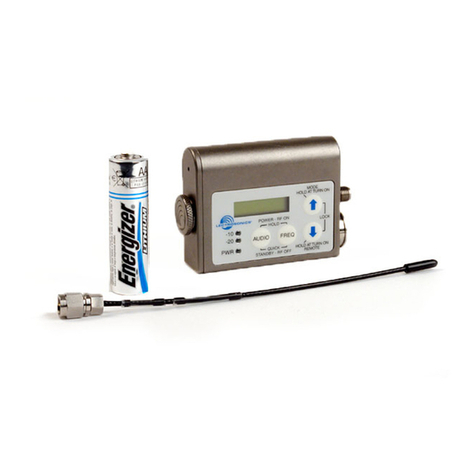
Lectrosonics
Lectrosonics SM operating instructions

Eurotron
Eurotron IRtec Rayomatic 14 MK2 instruction manual
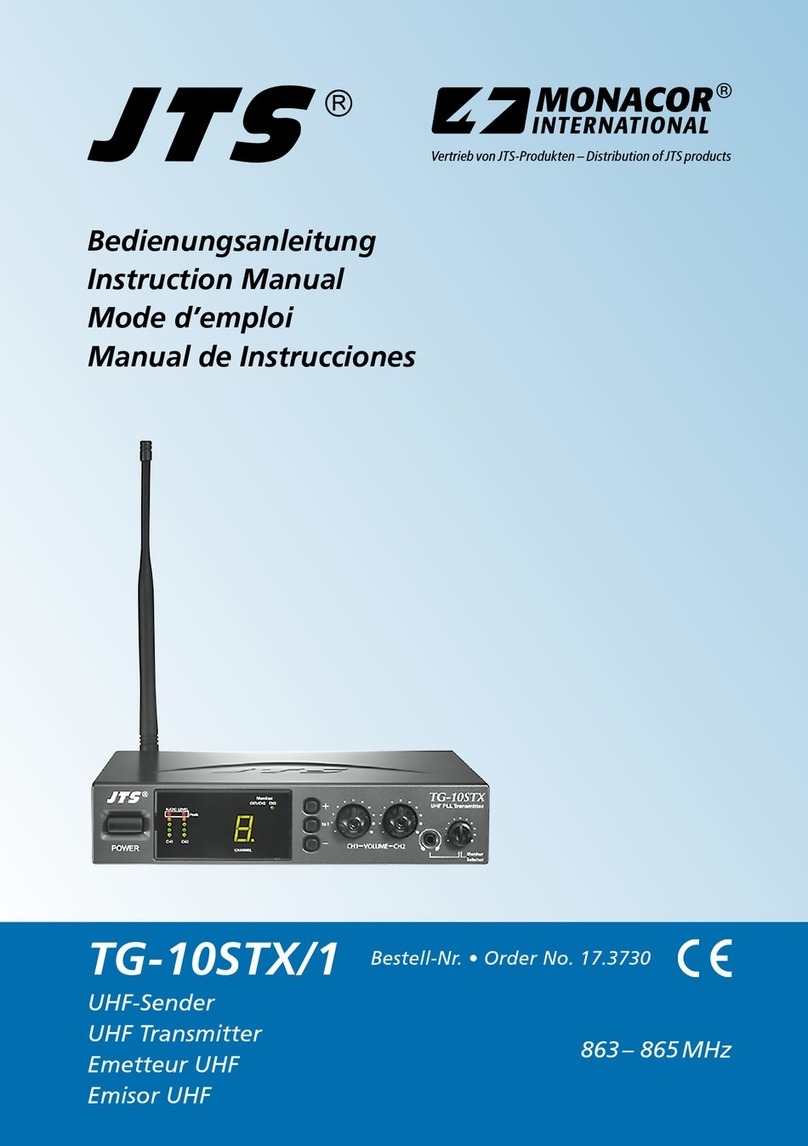
Monacor
Monacor JTS TG-10STX/1 instruction manual
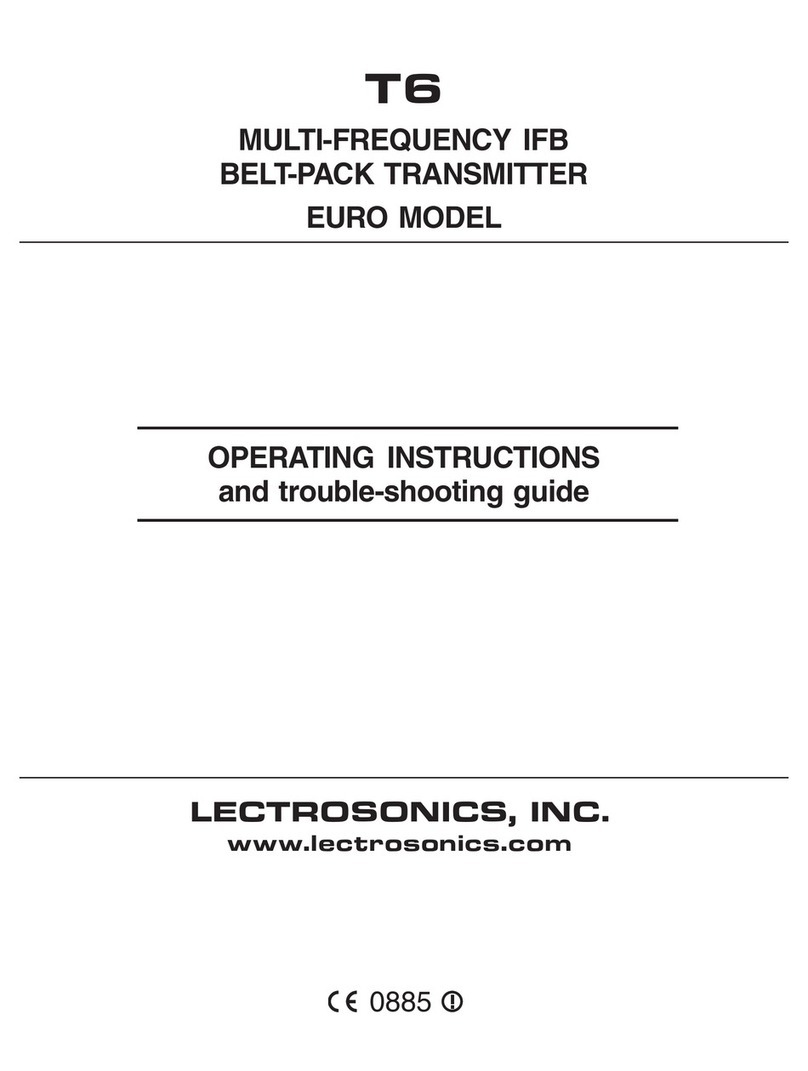
Lectrosonics
Lectrosonics T6 operating instructions

Becker
Becker Centronic VarioControl VC421-II Assembly and operating instructions
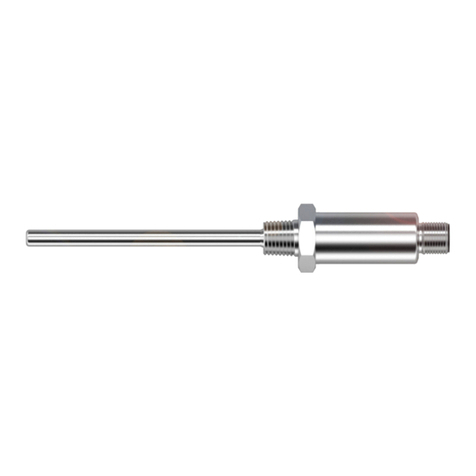
Balluff
Balluff BFT 002 A1A Series user guide

